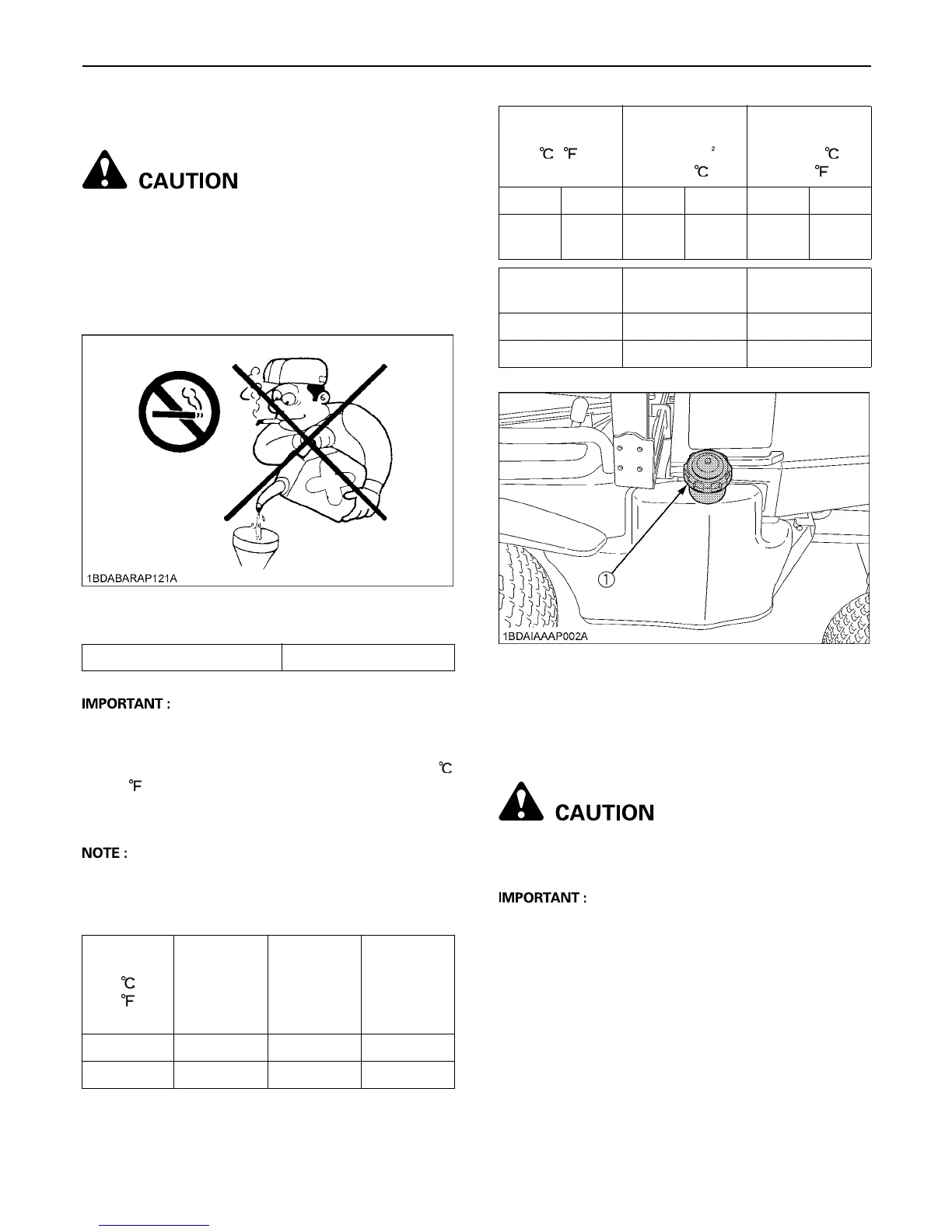PERIODIC SERVICE32
BChecking Amount of Fuel and Refueling
To avoid personal injury:
A Handle fuel carefully. If the engine is running,
do not fill the fuel tank. If engine is hot, let
engine cool several minutes before adding fuel.
Do not smoke while filling the fuel tank or
servicing the fuel system. Fill fuel tank only to
bottom of filler neck.
Check the fuel level. Take care that the fuel tank does not
become empty.
A Use Diesel Fuel Only
1. Use No.2 diesel fuel.
2. Use No.1 diesel fuel if the temperature is below -10
(14 ).
3. Always use a strainer when refueling to prevent fuel
injection pump contamination.
A No.2-D is a distillate fuel of lower volatility for engines
in industrial and heavy mobile service.
(SAE J313 JUN87)
Grade of Diesel Fuel Oil according to ASTM D975
BChecking and Cleaning Radiator Screen
and Bonnet Screen to Prevent
Overheating
To avoid personal injury:
A Be sure to stop the engine and remove the key
before cleaning.
A The air intake area must be clear of debris to prevent
the engine from overheating.
Daily or after every 5 hours of operation, check to be sure
the radiator screen and the bonnet screen are clean.
Dirt or chaff on the radiator screen or bonnet screen
decrease cooling performance.
1. Remove the radiator screen and the bonnet screen,
and remove all foreign material.
2. Remove the dust from between the fins and the tube.
3. Tighten the fan drive belt as necessary. For this, refer
to "EVERY 100 HOURS" in "PERIODIC SERVICE"
section.
Fuel tank capacity 61 L (16.1 U.S.gals.)
Flash point
()
Water and
Sediment,
volume
%
Carbon
Residue on,
10 percent
Residuum,
%
Ash, weight
%
Min Max Max Max
52 (125) 0.05 0.35 0.01
Distillation
Temperatures
()
90% Point
Viscosity
Kinematics
cSt or mm /s
at 40
Viscosity
Saybolt, SUS
at 37.8
(100 )
Min Max Min Max Min Max
282
(540)
338
(640)
1.9 4.1 32.6 40.1
Sulfur, weight
%
Copper strip
Corrosion
Cetane
Number
Max Max Min
0.50 No.3 40
(1) Fuel port
